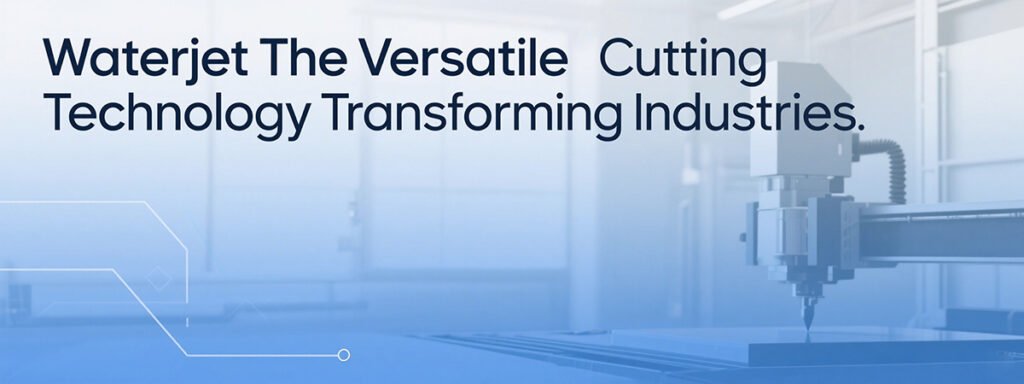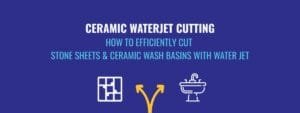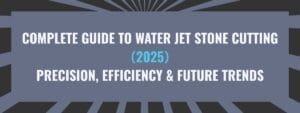
Waterjet: What Is It and How Does It Work?
Water jet is a cutting technology that uses high-pressure water (and often abrasive particles) to slice through a wide range of materials. At its core, a water jet system pressurizes water to extreme levels—typically between 30,000 and 90,000 psi (pounds per square inch)—before forcing it through a small nozzle. This creates a thin, high-velocity stream that can cut through materials as soft as foam or as hard as titanium.
Water jet systems can be categorized into two main types: pure water jet and abrasive water jet. Pure water jet uses only high-pressure water, ideal for soft materials like rubber, paper, or food. Abrasive water jet mixes water with abrasive particles (such as garnet) to cut harder materials like metal, stone, or composites.
Waterjet: Key Applications Across Industries
Water jet cutting has revolutionized numerous industries due to its versatility. Here are some key applications:
- Automotive Industry: Water jet cuts metal components for car bodies and engines with high precision, avoiding heat distortion that could affect part performance.
- Aerospace Sector: Water jet is used to cut lightweight alloys and composites for aircraft parts, ensuring strict safety and accuracy standards.
- Stone and Tile Fabrication: Water jet creates intricate designs on marble, granite, and ceramic tiles for countertops and flooring.
- Food Processing: Pure water jet cuts foods like meat, bread, and vegetables hygienically, as it doesn’t contaminate the product.
Waterjet: Advantages Over Other Cutting Methods
Water jet cutting offers unique benefits compared to traditional techniques like laser cutting, plasma cutting, or mechanical sawing. The table below highlights these differences:
| Cutting Method | Heat Affected Zone (HAZ) | Material Versatility | Precision | Environmental Impact |
| Water jet | None | All materials (soft to hard) | ±0.001 inch | Uses water and recyclable abrasives |
| Laser Cutting | Significant | Best for thin metals/plastics | ±0.002 inch | Consumes high energy; emits fumes |
| Plasma Cutting | Moderate to high | Limited to conductive metals | ±0.01 inch | Produces smoke and slag |
Water jet’s lack of heat-affected zone (HAZ) is particularly critical for materials sensitive to high temperatures, such as aluminum and certain polymers. Additionally, waterjet can cut thick materials (up to 12 inches or more) in one pass, which many other methods struggle to achieve.
Waterjet: Factors to Consider When Choosing a System
Waterjet systems vary in size, pressure, and functionality. When selecting one, keep these factors in mind:
- Material Type and Thickness: Abrasive waterjet is better for hard, thick materials, while pure waterjet suffices for soft, thin ones.
- Production Volume: High-pressure systems (60,000+ psi) are faster and suit large-scale production, while lower-pressure models work for small batches.
- Precision Requirements: Systems with advanced CNC controls offer higher accuracy for intricate designs.
Waterjet: The Future of Cutting Technology
Waterjet technology continues to evolve, with advancements in pressure levels, automation, and energy efficiency. As industries demand more sustainable and precise manufacturing processes, waterjet is poised to play an even larger role. Its ability to cut almost any material without harming the environment makes it a top choice for modern production.
This article is only for reference – for personalized assistance. Contact APW WATER JET SALES. It is every machinery provider’s obligation to help customers maximize profits.
watch water jet cutting videos / download catalogs / check technology data



